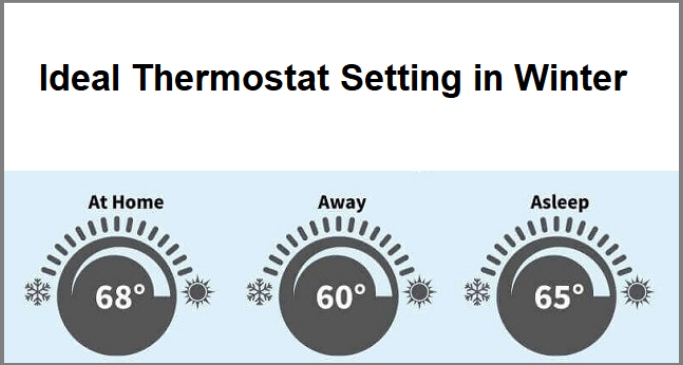Many homeowners, even renters, are looking for methods to cut their energy use and reduce heating costs this winter since heating expenses are anticipated to rise by 54 percent for many homes this winter. Luckily, there are numerous simple strategies to reduce your energy use — one of which is using the digital Bluetooth thermostat with appropriate settings.
This post will explain how to adjust your smart or Bluetooth thermostat to optimize energy usage this winter and how it may make a difference in your budget. We’ll also provide you with tips on keeping your home warm without breaking the budget.
The ideal temperature for the winter season
Set your home’s thermostat at 68° for most of the day throughout the winter, the US Department of Energy suggests. To achieve optimal effectiveness, you should also set aside 8 hours every day, during which you lower the temperature by 7°- 10°.
In this way, you may be able to lower your annual energy bills by as much as 10%. Following your personal preferences and schedule, you may choose whether you’d want to keep your home cooler during the day or colder at night.
Some individuals like to turn the temperature down at night to curl up beneath blankets and not be bothered by the lower temperatures during the day.
If you are doing office-based work, you can turn down your thermostat during the daytime. Once you come back to your home, you may raise the thermostat to a more relaxed setting. In sum, you can choose from the following settings in winter.
- While at home: 68°-70° Fahrenheit.
- While sleeping: 65° Fahrenheit.
- While you’re away: 65° Fahrenheit.
What it means and why it matters
What is about 680, the perfect temperature for winter? However, it’s on what they consider acceptable temperatures for some people, but there’s an effective reason to keep your house cooler during winter.
Moreover, it will take more time for your house to lose heat if the thermostat is set at a lower setting instead of a higher temperature. In contrast, keeping your home at a cool internal temperature can help it retain heating for a longer time.
Additionally, it minimizes the energy necessary to keep the house comfortably warm. As a consequence, you’ll save both energy and money on your utilities. Also, check out how to program the white Rodgers thermostat.
Choosing the best location for a thermostat to maximize its efficiency
Moreover, you can improve energy efficiency by positioning your thermostat in the most efficient location possible. If possible, situate your smart thermostat away from draughty locations.
For instance, near vents, entrances, or windows and away from regions that get direct sunlight since these conditions may cause your thermostat to activate needlessly. Alternatively, hang it on a wall in a frequently visited location of your house.
Check Thermostat compatibility
It’s not ideal to fiddle with your thermostat numerous times each day. Therefore, a smart thermostat allows you to create a schedule or automate temperature adjustments.
Unfortunately, certain programmable and smart thermostats are not compatible with heat pumps. You should consult with your HVAC professional about purchasing a particular kind of thermostat that is developed specifically for use with your heat pump system if you do.
Another strategy for lowering energy expenses
solar energy, a green energy source, may be considered if your electricity costs are becoming too expensive. With solar panels, you may create electricity, lowering your energy expenditures and decreasing your dependency on the public power system.
Final Thought
An optimal thermostat setting can significantly impact your energy use in winter. Energy conservation and lower energy costs may be accomplished by keeping your home’s temperature at or below 680.
In the summer, the opposite is true. Setting your thermostat as high as possible during the hot months and then lowering it to 78 F to cool your home is recommended.


